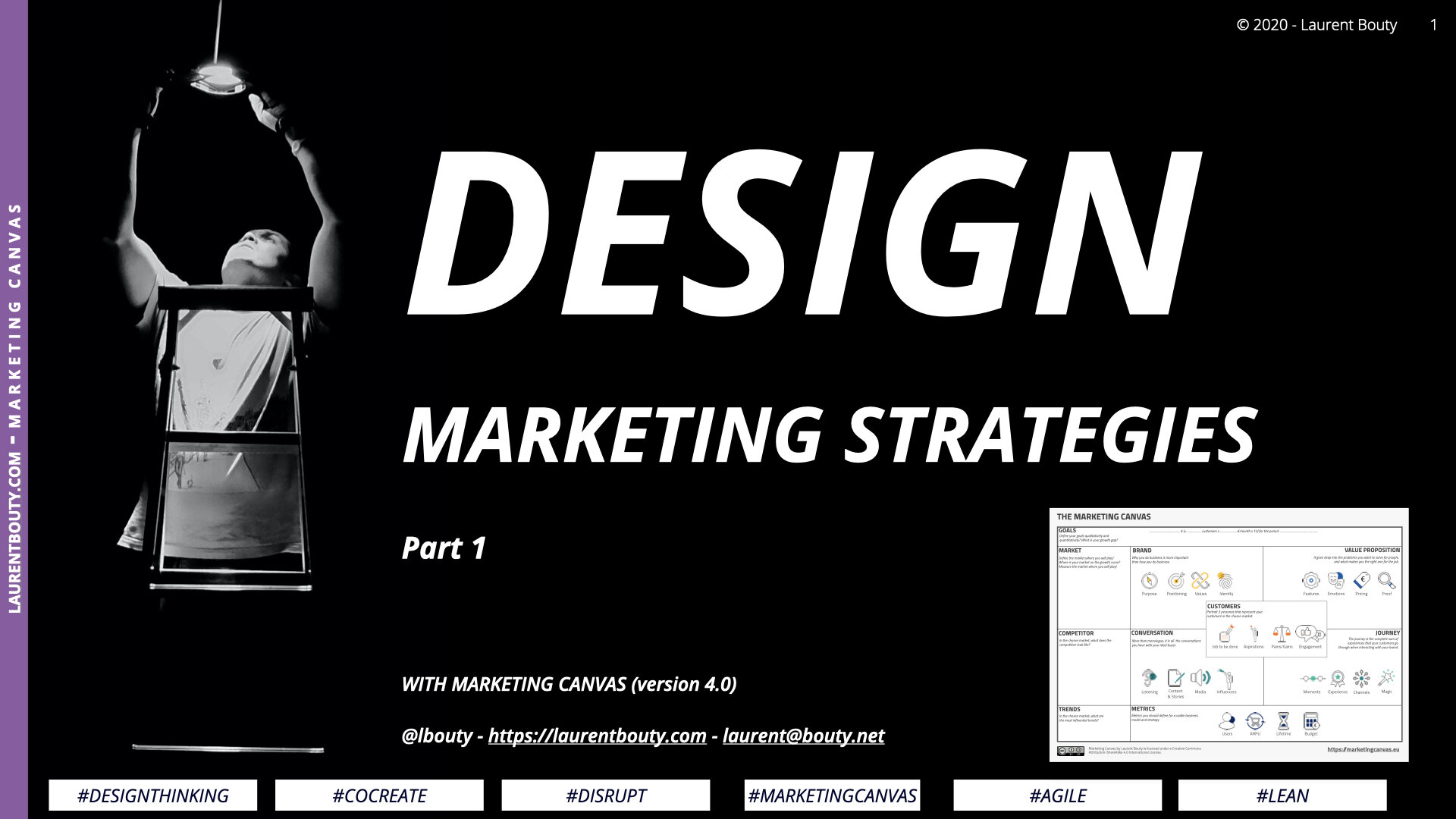Last update: 10/06/2023
In a nutshell
Navigating the complex landscape of customer experience can be a challenging task for brands. This article provides an in-depth understanding of 'Moments'— a crucial sub-dimension in the customer journey aspect of the Marketing Canvas, a strategic tool developed by Laurent Bouty. The piece highlights the importance of consciously orchestrating these moments and how they shape customers' perception of your brand. Using insights from Matt Watkinson's 'The Ten Principles Behind Great Customer Experiences,' the article outlines a structured approach to managing these interactions effectively. It also presents practical tools, evaluation methods, and improvement strategies to enhance these moments. With the aid of a case study on Green Clean, the reader will grasp the tangible application of these principles. This article is an invaluable resource for marketers, entrepreneurs, and anyone seeking to optimize their marketing strategy and create memorable customer experiences.
In the Marketing Canvas
The Marketing Canvas is a powerful tool for entrepreneurs and non-marketers to build a robust marketing strategy. It consists of six meta-dimensions, each with four sub-dimensions, for a total of 24 sub-dimensions defining your Marketing Strategy. One of these sub-dimensions is EXPERIENCE, which falls under the JOURNEY meta-category
Defining Experience
While developing your marketing strategy, it is paramount to understand and orchestrate the experiences your customers have with your brand. This interaction can occur at any stage, from product search to purchase, use, and even when they voice complaints. It is essential to realize that all these interactions, deliberate or inadvertent, contribute to the brand's perception in the customer's mind.
Managing this perception is one of the most critical tasks your brand should be focusing on. For your marketing strategy, ask yourself: Have you orchestrated the experiences that your customers have with your brand? Have you deliberately thought and decided how you would like this to happen?
Matt Watkinson, in his book "The Ten Principles Behind Great Customer Experiences," suggests ten principles to follow if we want to create outstanding customer experiences:
Strongly reflect the customer's identity: Purchases are usually driven by our values, self-image, and the statement a product will make about us, rather than traditional considerations of quality and price. Consider the different values implied by choosing a Mont Blanc pen over a Bic biro.
Satisfy our higher objectives: Successful products help us achieve our goals. Define the end goal, particularly the super-objective of any purchase. For instance, the goal is not merely to buy an airline ticket but to attend a family funeral. Understanding these higher objectives can provide invaluable insights to your customer's motivations.
Leave nothing to chance: Overlooking no detail is key when considering your customer's journey to your product. Every interaction with your customer must be positive, no matter how insignificant it may seem.
Set and meet expectations: Disappointment often arises when a product fails to live up to its hype. According to Accenture, 68% of electrical item returns are not due to faults but because they weren't what customers expected. Thus, setting clear expectations and meeting them consistently is a critical principle.
Tools for Experience
The implementation of these principles requires a comprehensive understanding of your customer's journey and the tools to orchestrate these experiences. Customer Journey Maps, Experience Maps, and Service Blueprints are valuable tools for visualizing and planning the experiences at each moment.
A Customer Journey Map is a diagram that visualizes the process a customer undergoes to achieve a goal with your product or service. It helps to identify key interactions, customer feelings, pain points, and opportunities for improvement. For instance, if your business is an online retail store, the journey could include stages like awareness, consideration, purchase, delivery, and after-sales service.
Experience Maps go a step further by including the customer's broader context, such as their thoughts and feelings outside of their interactions with your product or service. These insights help to craft more personalized and compelling brand experiences.
Service Blueprints are operational tools used to design and innovate services. It visualizes the relationship between different service components - people, props, and processes - and shows how they come together to create an overall experience. It helps to identify gaps, inefficiencies, and opportunities for improvement in the service delivery.
Translating Experience into Action
Once we have a clear understanding of the customer's journey and the experiences we aim to deliver, the next step is to translate these insights into actions. This could involve designing new touchpoints, refining existing ones, or eliminating those that do not add value.
For instance, if your journey map reveals that customers are often confused about how to use your product, you may consider providing more detailed instructions or offering an online tutorial. If customers report feeling unappreciated, you could develop a loyalty program to recognize and reward your most valued customers.
It's important to remember that every touchpoint is an opportunity to deliver a positive experience, shape brand perception, and build customer loyalty. Therefore, it is crucial to ensure that each interaction aligns with your brand promise and meets your customer's expectations.
Evaluation and Improvement
Is the EXPERIENCE of your user journey helping you achieve your goals?
An integral part of experience management is continuous evaluation and improvement. Here, metrics play an essential role. Understanding and tracking key performance indicators (KPIs) can provide valuable insights into the effectiveness of your customer experience strategy.
To evaluate your brand's performance, rate your agreement with the following statements on a scale from -3 (completely disagree) to +3 (completely agree):
For each moment, your brand's response has been adapted to reflect your customers' identity.
For each moment, your brand's response has helped customers achieve their goals.
For each moment, your brand's response is consistent across time and space, leaving nothing to chance.
For each moment, your brand's response has clear expectations and delivers it consistently.
If the score is negative, it means there are opportunities for improvement. For instance, if you score low on 'adapted to reflect your customers' identity,' you might need to delve deeper into understanding your customers and aligning your brand with their identity. If the score is low on 'helping customers achieve their goals,' you may need to re-evaluate your product features or service delivery.
Green clean use case
Consider "Green Clean," an eco-friendly cleaning service. The company meticulously crafted their customer experience based on the principles discussed. Green Clean understands that their customers identify as environmentally conscious individuals who value cleanliness and health. The brand emphasizes this alignment through its marketing and customer service interactions.
Green Clean knows its customers' objective is not just to get a clean house, but to have a clean, safe, and healthy environment for their families without harming the planet. Thus, they provide information on how their services contribute to these goals.
Every touchpoint is carefully planned and executed. From booking to the post-service follow-up, the brand ensures that the process is seamless, with communication at every stage. For example, customers are informed when their service provider is on the way, ensuring there are no surprises.
Lastly, Green Clean sets clear expectations about the service and consistently meets them. They detail what the service will entail, the products they use, and the outcomes the customer can expect. By following through, they ensure customer satisfaction and build trust in their brand.
Conclusion
Understanding and orchestrating customer experiences are crucial aspects of a successful marketing strategy. By reflecting the customer's identity, satisfying their higher objectives, leaving nothing to chance, and meeting expectations, brands can create memorable experiences that resonate with their customers and lead to greater brand loyalty. Tools like journey maps and service blueprints can help visualize these experiences and translate them into actionable strategies. Regular evaluation and continuous improvement ensure that the brand remains aligned with its customers' evolving needs and expectations, ensuring long-term success.
Sources
Matt Watkinson, Book, The 10 Principles Behind Great Customer Experiences.
More on the Marketing Canvas
Marketing Canvas by Laurent Bouty





































